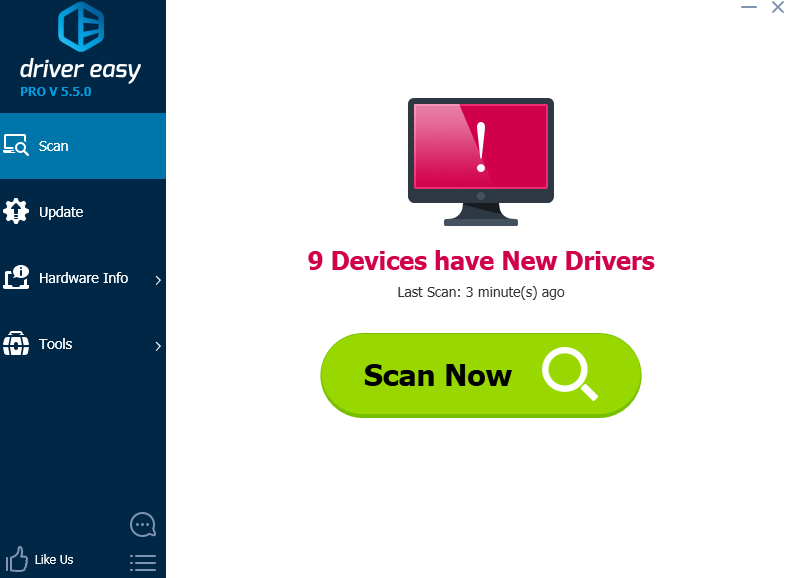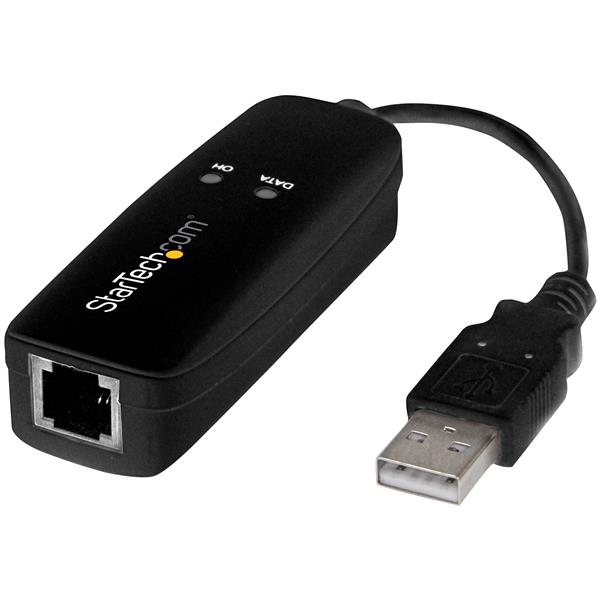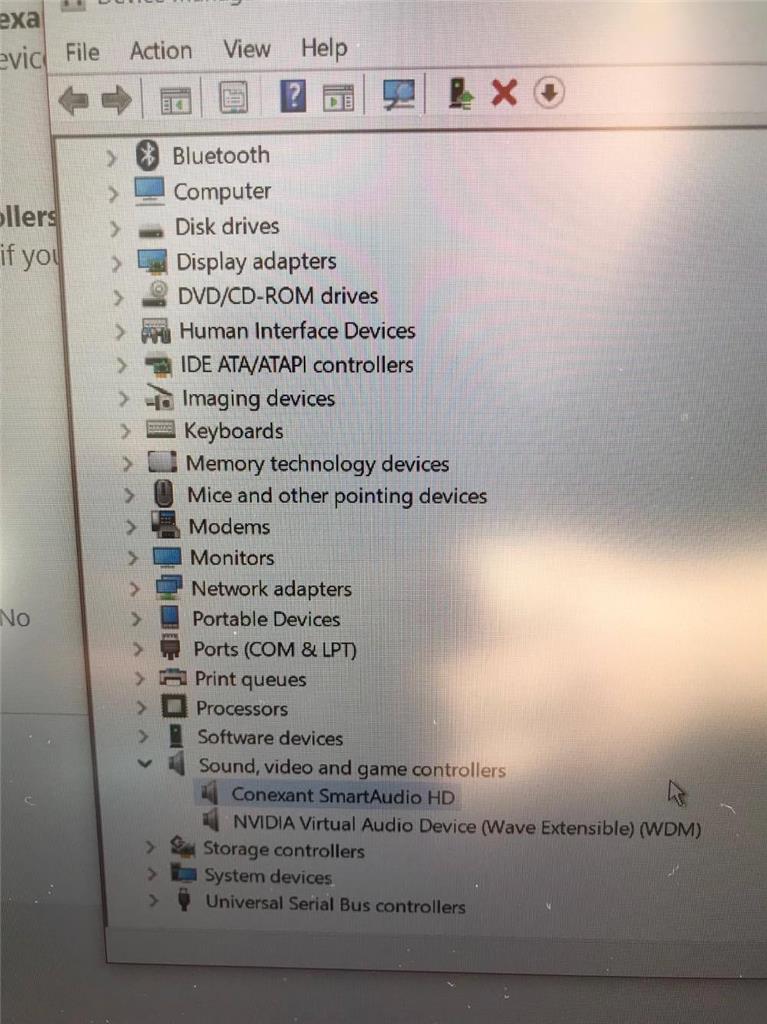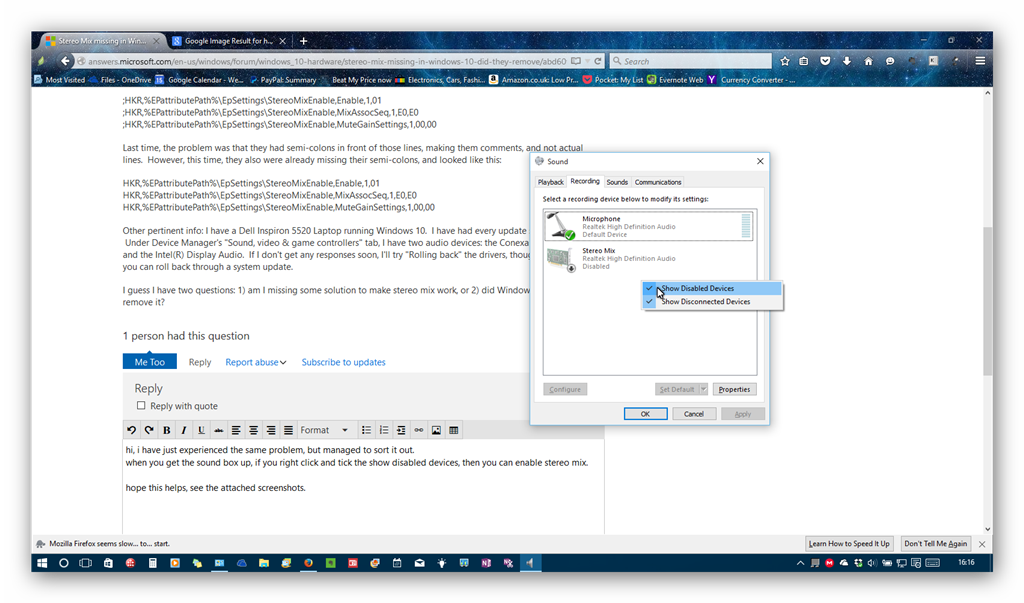
| Type | Subsidiary |
|---|---|
| Industry | Semiconductor industry and software industry |
| Founded | January 4, 1999; 22 years ago |
| Defunct | 2017 |
| Headquarters | , |
| Rick Bergman, CEO | |
| Products | Semiconductors for voice and audio processing (AudioSmart) and imaging (ImagingSmart) |
| Revenue | $112 million (FY14) |
Number of employees | 312 (2014) |
| Parent | Synaptics |
| Website | www.conexant.com |
Conexant Systems, Inc. was an American-based software developer and fablesssemiconductor company. They provided products for voice and audio processing, imaging and modems. The company began as a division of Rockwell International, before being spun off as a public company. Conexant itself then spun off several business units, creating independent public companies which included Skyworks Solutions and Mindspeed Technologies.
The company was acquired by computing interface technology company Synaptics, Inc. in July 2017.
Corrupted By Conexant Usb Cx93010 Acf Modem Windows 10 Pro 64bit: Input Devices: KME USB-brugerstyret inputenhed (HID) Outdated: Port Devices: Huawei Vodafone Mobile Broadband Diagnostics Port (Huawei) (COM23) Up To Date and Functioning: Monitors: Sony Digital Flat Panel (1024x768) Up To Date and Functioning: Mobile Phones And Portable Devices.
History[edit]
- Dec 17, 2001 In fact, the mobile-phone chip unit will be the first to leave home, as Conexant heralded its pairing with infrastructure-focused Alpha into a separate company.
- Jul 20, 2010 With Conexant’s new reference design, manufacturers can develop products that support up to eight mobile phone connections. A built-in microphone and stereo speakers enable high-quality.
In 1996, Rockwell International Corporation incorporated its semiconductor division as Rockwell Semiconductor Systems, Inc. On January 4, 1999, Rockwell spun off Conexant Systems, Inc. as a public company.[1] It was listed on the NASDAQ under symbol CNXT on January 4, 1999.[2] At that time, Conexant became the world's largest, standalone communications-IC company.[1] Dwight W. Decker was its first chief executive officer and chairman of its board of directors. The company was based in Newport Beach, California.[2]
In the early 2000s, Conexant spun off several standalone technology businesses to create public companies.[3]In March 2002, Conexant entered into a joint venture agreement with The Carlyle Group to share ownership of its wafer fabrication plant, called Jazz Semiconductor.[4]
In June 2002, Conexant spun off its wireless communications division, which merged immediately following the spinoff with Massachusetts-based chip manufacturer Alpha Industries Inc. to form publicly held Skyworks Solutions Inc.[5] In June 2003, Conexant spun off its Internet infrastructure business to create the publicly held company Mindspeed Technologies Inc.[6] Mindspeed would eventually be acquired by Lowell, MA-based M/A-COM Technology Solutions.[7]
In 2004, Conexant merged with Red Bank, New Jersey semiconductor company GlobespanVirata, Inc., with Conexant as the surviving corporation. Subsequently, GlobespanVirata’s name was changed to Conexant, Inc.[8]
In April 2008, Conexant announced the sale of its broadband media processing business, which provided products for satellite, cable and IPTV applications, to Dutch semiconductor manufacturer NXP Semiconductors NV.[9]
In September 2008, Jazz was sold to Israel-based Tower Semiconductor Ltd and became known as TowerJazz.[10]
In August 2009, Conexant sold its broadband access product line to Fremont, CA semiconductor company Ikanos Communications.[11]
In February 2011, an agreement was announced for San Francisco investment firm Golden Gate Capital to acquire all of the outstanding shares of Conexant at a price of $2.40 per share, and take the company private.[12]
In February 2013, citing the burden of servicing debt related to multiple corporate acquisitions in the late 1990s, as well as the loss of revenue from the bankruptcy of key customer Eastman Kodak, Conexant filed for Chapter 11 protection in the U.S. Bankruptcy Court for the District of Delaware. As part of the bankruptcy agreement, the company agreed on a restructuring plan with owners and its sole secured lender, QP SFM Capital Holdings Ltd.[13] The reorganized company emerged from bankruptcy in July 2013. As part of the operational restructuring, the company moved its headquarters from Newport Beach to nearby Irvine, and focused on a narrower product portfolio, consisting of far-field voice input processing-based devices, video surveillance and printer systems on a chip (SoCs).[14]
Since 2013, Conexant's silicon and software solutions for voice processing have been instrumental in the CE industry's proliferation of voice-enabled devices. The company's AudioSmart brand of voice input processors and embedded far-field processing software has become adopted by CE device manufacturers in numerous products ranging from Artificially Intelligent digital assistant devices and smart speakers to voice-enabled televisions and personal robots. In February 2016, it was announced that Korean electronics company LG Electronics was going to integrate Conexant's CX2092x far-field voice input processor system-on-chip (SoC) into two of its smart home products: a set top box and an IoT hub for controlling home electronic devices.[15]
In March 2016, Conexant announced that their AudioSmart software was being integrated into Qualcomm's Hexagon digital signal processor family, a major component of Qualcomm's Snapdragon processor reportedly contained in over 1 billion smart devices.[16]
In December 2016, Conexant and Amazon co-announced the AudioSmart 2-Mic Development Kit for Amazon AVS, a commercial-grade reference solution that streamlines the design and implementation of audio front end systems. Based on the Conexant AudioSmart™ CX20921 Voice Input Processor, the dual microphone board was designed to reduce time-to-market for new third-party voice-enabled Alexa devices.[17]

On 11 May 2017 news appeared that security researchers discovered that Conexant's audio drivers were installing keylogger software, including many laptops sold by HP. The keylogger writes every single keystroke typed by a user (including passwords) and stores them in an unencrypted file on the user's computer.[18]
On July 26, 2017, Synaptics completed its acquisition of Conexant Systems, LLC.[19]
Product line[edit]

Conexant has two main product families: the AudioSmart brand of audio processors and the ImagingSmart brand of image processors and modems.
AudioSmart[edit]
AudioSmart is a line of analog-to-digital converters (AD Converter), codecs, USBdigital signal processor (DSP) codecs, voice/speech processors, and software that improves how audio signals are processed for electronic audio equipment.
- AD Converters - Conexant's analog to digital converters are used for far-field voice/speech capture applications. They convert analog signals to digital in order to enhance the signal before transmitting it to third party speech recognition products.[20] The technology is used in voice-enabled consumer products. A low power version with a standby mode and a fast wake up mode is used for battery powered devices.[21]
- Codecs - Conexant's codecs encode and decode digital signals, to allow transmission, storage, encryption, and playback or editing. The codecs are used to improve audio signals in tablets and PCs, and for consumer audio applications such as conferencing, streaming media and editing.[22][23]
- USB & I2S DSP codecs - Conexant's DSP codecs have USB and integrated interchip sound (I2S) interfaces to connect to electronic devices such as headsets and docking stations.
- VoiceSpeech processors - Conexant's VoiceSpeech line of system-on-chip (SoC) speech processors add voice command capabilities to smart TVs.[24]Far-field voice pre-processing algorithms and 24-bit analog-to-digital conversion prevent a noisy television itself from interfering with a user's commands. The company's Smart Source Pickup technology maintains speech recognition in the presence of external noise.[25] At CES 2016, Conexant introduced a new four microphone voice input processor for smart voice applications, which included the company's Smart Source Locator (SSL) software, which gives the chip 360-degree voice location and speech recognition within 15 meters.[26]
- AudioSmart software - Conexant develops AudioSmart software, audio and voice processing technologies for far-field voice communication and far-field speech control. Applications include speech recognition for smart home, smart phone, IoT, robotic and wearable devices, voice calls using social media apps, or Skype calling. Conexant's AudioSmart software is available on Windows, Android and Linux operating systems.[27]
ImagingSmart[edit]

ImagingSmart is a line of silicon and software to improve performance of image dependent electronic equipment, such as document and photo imaging controllers, digital video, and devices with integrated fax or data modems, such as printers or point of sale terminals.
- Document and photo imaging controllers - Conexant offers products for single-function and multi-function printers, photo printers, and other advanced printers. The chips integrate input/output features, including USB and serial, and embedded firmware allows printing to shared printers using tablets or smartphones. The technology is compatible using Wi-Fi with several cloud computing printing services.[28]
- Digital video - Conexant's digital video and image encoders and HD processors are designed to improve video communications. The company also offers analog video decoders which capture and convert analog, terrestrial, and digital broadcast video.
- Fax modem chips and data modem chips - Conexant's fax modem chips with VoIP support add fax modem functionality to multi-function printers. The low-power chips support v.34 packet connectivity over enterprise networks, per the ITU-T G.1050 Network model for evaluating multimedia transmission performance over Internet Protocol.[29] Data modem chips are deployed in point of sale terminals.
Operations[edit]
Conexant's headquarters was in Irvine, California.[30]
References[edit]
Mobile Phones Wikipedia
- ^ ab'Rockwell Semi spin-off Conexant will target communications IC market'. eetimes.com. 1998-11-10. Retrieved 2015-12-17.
- ^ abConexant Systems (1999-01-29). 'Prospectus'. Form S-3/A. US Securities and Exchange Commission. Retrieved 2013-10-23.
- ^Junko Yoshida (2013-03-05). 'How Conexant ended up filing for Chapter 11'. EE Times. Retrieved 2015-12-17.
- ^'Conexant's foundry spin-off becomes 'Jazz Semiconductor,' serves 27 customers'. eetimes.com. 2002-05-06. Retrieved 2015-12-17.
- ^'Alpha's and Conexant's wireless spin-off becomes 'Skyworks Solutions''. eetimes.com. 2002-05-21. Retrieved 2015-12-17.
- ^'Conexant details Mindspeed spinoff plans'. eetimes.com. 2003-03-24. Retrieved 2015-12-17.
- ^'M/A-COM to Buy Mindspeed for $272M'. eetimes.com. 2013-11-13. Retrieved 2015-12-22.
- ^'Conexant Systems To Buy GlobespanVirata'. informationweek.com. 2003-11-03. Retrieved 2015-12-22.
- ^'NXP to acquire Conexant Broadband Media Processing unit for initial $110m in cash to expand set-top box + digital TV operation'. opticalkeyhole.com. 2008-04-29. Retrieved 2015-12-15.
- ^'Tower completes Jazz acquisition'. eetimes.com. 2008-09-22. Retrieved 2015-12-22.
- ^'Ikanos Communications wraps acquisition of Conexant's broadband line'. fiercetelecom.com. 2009-08-27. Retrieved 2015-12-17.
- ^'Golden Gate buys Conexant'. eetimes.com. 2011-02-23. Retrieved 2015-12-17.
- ^'Chipmaker Conexant Systems files for chapter 11, to slash debt'. reuters.com. 2013-02-28. Retrieved 2016-01-13.
- ^'Conexant lays out post-Chapter 11 game plan'. eetimes.com. 2013-06-11. Retrieved 2015-12-17.
- ^'LG Turns to Conexant for Voice Control of Smart Home Devices'. Speech Tech Magazine. 2016-02-23. Retrieved 2016-03-14.
- ^'Qualcomm to Integrate Conexant AudioSmart into Hexagon DSPs'. Speech Tech Magazine. 2016-03-01. Retrieved 2016-03-11.
- ^'Announcing Conexant's Development Kit for Amazon Alexa: An Easier Way to Build with AVS'. Retrieved 2017-03-24.
- ^'HP laptops covertly log user keystrokes, researchers warn. Audio driver supplied by Conexant may put PCs from other makers at risk, too'. arstechnica.com. 2017-05-11. Retrieved 2017-05-11.
- ^'Synaptics Closes Conexant Acquisition'. Globe Newswire.
- ^'Conexant Targets Far-Field Voice Processing for TVs, PCs, Smartphones & Tablets'. eetimes.com. 2009-01-09. Retrieved 2015-12-18.
- ^'CX20823 Mono ADC for Voice Input AudioSmart Product Brief'(PDF). conexant.com. Archived from the original(PDF) on 2016-10-28. Retrieved 2015-12-18.
- ^'Conexant Launches New HD Audio CODEC For Mobile'. anandtech.com. 2015-06-02. Retrieved 2015-12-17.
- ^'I2S Audio CODEC with AudioSmart Amplifier'. eeweb.com. 2015-01-15. Retrieved 2015-12-18..
- ^'Voice input processor SoC targets smart TVs(2)'. electronicproducts.com. 2013-01-09. Retrieved 2015-12-17.
- ^'Conexant Systems and Sensory Partner'. speechtechmag.com. 2013-01-08. Retrieved 2015-12-17.
- ^'Conexant takes sound and voice control to the next level'. edn.com. 2016-01-06. Retrieved 2016-02-11.
- ^'Conexant Systems Debuts new I2S audio Codec and AudioSmart Software Technologies'. audioexpress.com. 2015-01-09. Retrieved 2016-10-27.
- ^'Conexant Embedded Imaging Software Supports Broadcom Wi-Fi Networking Solution'. technews.tmcnet.com. 2014-01-08. Retrieved 2015-12-17.
- ^'CES: VoIP-enhanced fax modem chips make multifunction printers smarter'. embedded.com. 2014-01-07. Retrieved 2015-12-17.
- ^'Contact us'. conexant.com. Retrieved 2015-12-22.
External links[edit]
| Wikimedia Commons has media related to Conexant. |
AT commands are instructions used to control a modem. AT is the abbreviation of ATtention. Every command line starts with 'AT' or 'at'. That's why modem commands are called AT commands. Many of the commands that are used to control wired dial-up modems, such as ATD (Dial), ATA (Answer), ATH (Hook control) and ATO (Return to online data state), are also supported by GSM/GPRS modems and mobile phones. Besides this common AT command set, GSM/GPRS modems and mobile phones support an AT command set that is specific to the GSM technology, which includes SMS-related commands like AT+CMGS (Send SMS message), AT+CMSS (Send SMS message from storage), AT+CMGL (List SMS messages) and AT+CMGR (Read SMS messages).
Note that the starting 'AT' is the prefix that informs the modem about the start of a command line. It is not part of the AT command name. For example, D is the actual AT command name in ATD and +CMGS is the actual AT command name in AT+CMGS. However, some books and web sites use them interchangeably as the name of an AT command.
Here are some of the tasks that can be done using AT commands with a GSM/GPRS modem or mobile phone:
Get basic information about the mobile phone or GSM/GPRS modem. For example, name of manufacturer (AT+CGMI), model number (AT+CGMM), IMEI number (International Mobile Equipment Identity) (AT+CGSN) and software version (AT+CGMR).
Get basic information about the subscriber. For example, MSISDN (AT+CNUM) and IMSI number (International Mobile Subscriber Identity) (AT+CIMI).
Get the current status of the mobile phone or GSM/GPRS modem. For example, mobile phone activity status (AT+CPAS), mobile network registration status (AT+CREG), radio signal strength (AT+CSQ), battery charge level and battery charging status (AT+CBC).
Establish a data connection or voice connection to a remote modem (ATD, ATA, etc).
Send and receive fax (ATD, ATA, AT+F*).
Send (AT+CMGS, AT+CMSS), read (AT+CMGR, AT+CMGL), write (AT+CMGW) or delete (AT+CMGD) SMS messages and obtain notifications of newly received SMS messages (AT+CNMI).
Read (AT+CPBR), write (AT+CPBW) or search (AT+CPBF) phonebook entries.
Perform security-related tasks, such as opening or closing facility locks (AT+CLCK), checking whether a facility is locked (AT+CLCK) and changing passwords (AT+CPWD).
(Facility lock examples: SIM lock [a password must be given to the SIM card every time the mobile phone is switched on] and PH-SIM lock [a certain SIM card is associated with the mobile phone. To use other SIM cards with the mobile phone, a password must be entered.])Control the presentation of result codes / error messages of AT commands. For example, you can control whether to enable certain error messages (AT+CMEE) and whether error messages should be displayed in numeric format or verbose format (AT+CMEE=1 or AT+CMEE=2).
Get or change the configurations of the mobile phone or GSM/GPRS modem. For example, change the GSM network (AT+COPS), bearer service type (AT+CBST), radio link protocol parameters (AT+CRLP), SMS center address (AT+CSCA) and storage of SMS messages (AT+CPMS).
Save and restore configurations of the mobile phone or GSM/GPRS modem. For example, save (AT+CSAS) and restore (AT+CRES) settings related to SMS messaging such as the SMS center address.
Note that mobile phone manufacturers usually do not implement all AT commands, command parameters and parameter values in their mobile phones. Also, the behavior of the implemented AT commands may be different from that defined in the standard. In general, GSM/GPRS modems designed for wireless applications have better support of AT commands than ordinary mobile phones.
In addition, some AT commands require the support of mobile network operators. For example, SMS over GPRS can be enabled on some GPRS mobile phones and GPRS modems with the +CGSMS command (command name in text: Select Service for MO SMS Messages). But if the mobile network operator does not support the transmission of SMS over GPRS, you cannot use this feature.
14.1. Basic Commands and Extended Commands
Mobile Phones In India
There are two types of AT commands: basic commands and extended commands.
Basic commands are AT commands that do not start with '+'. For example, D (Dial), A (Answer), H (Hook control) and O (Return to online data state) are basic commands.
Extended commands are AT commands that start with '+'. All GSM AT commands are extended commands. For example, +CMGS (Send SMS message), +CMSS (Send SMS message from storage), +CMGL (List SMS messages) and +CMGR (Read SMS messages) are extended commands.
| Previous Page | Page 20 of 65 | Next Page |
Contents at a Glance (
Conexant Mobile Phones & Portable Devices Driver Download For Windows 8
Click Here for Full Table of Contents)Conexant Mobile Phones App
Conexant Mobile Phones Wireless
